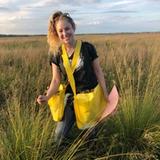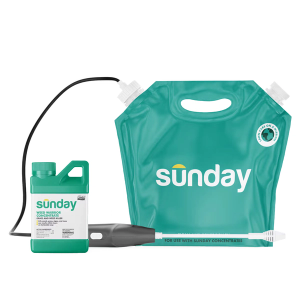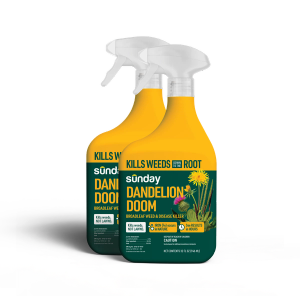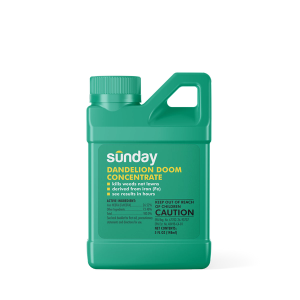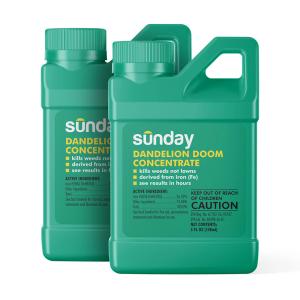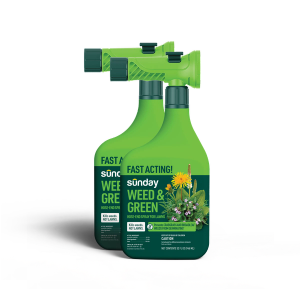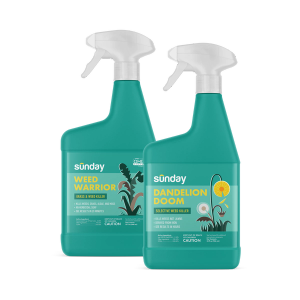What is lawn disease?
Managing lawn disease can sound overwhelming. While there are some lawn diseases that are very difficult to diagnose (e.g. root diseases), leaf diseases are more readily identifiable and solvable with the right treatment. Common foliar diseases in turfgrass:
Lawn fungus control
Lawn disease appears when fungi are present, environmental conditions weaken your lawn, and grass is susceptible and likely already stressed from other issues (soil compaction, heat, weeds, pests, other fungi).
Adjusting your normal lawn care habits will help you get fungal issues under control. There are three main aspects of care that you’ll need to consider or fix immediately.
- Adjust watering practices. First things, first. Your lawn’s watering schedule should be adjusted and fixed immediately when a foliar leaf disease is detected. At a minimum, this will halt the spread of the issue and allow you to reset watering to a cadence suited for your region, current weather, and specific lawn characteristics (drainage, grass type, etc.).
- Wait for the right conditions. Fungal issues shouldn’t be removed or repaired during poor climatic conditions like high temperatures and heat stress. This will likely only exacerbate the problem. We recommend waiting for the fall when conditions are more favorable for repairing the lawn.
- Know all existing turf issues. Other existing turf problems will make disease problems worse, especially other foliar diseases. Take on IPM for lawn disease: make a checklist of current lawn issues and appropriately identify the fungal disease in your lawn so you can properly address the problem.
How to mend lawn disease
Do everything you can to dry it out
- Fix your watering practices and stop relying on the same watering routine throughout different seasons.
- Begin seasonal auditing of systems, ensuring you are auditing between seasonal shifts and weather patterns.
- Water on a set schedule, and allow some drying time between watering sessions.
Sunday Tip:
Allowing your lawn to dry and recover between waterings is the most valuable thing you can do to mend fungal issues.
Seed to repair
- Prep the lawn for seed by mowing, removing clippings, and raking away debris that might hinder seed from reaching the soil.
- Depending on grass type(s), seed-in or propagate better varieties of grass.
- Water appropriately to ensure germination and root establishment.
So, can you use Dandelion Doom on lawn disease?
Chelated iron products may help mend lawn disease issues, and you can try to apply Sunday’s Dandelion Doom on foliar diseases (like pink snow mold, dollar spot, and rust). Dandelion Doom can be used to control or suppress diseases such as but not limited to*:
- Dollar Spot
- Rust
- Snow Mold
*Not approved for this use in California. Please see California label for all approved use.
While we can recommend trying Dandelion Doom on lawn disease, we would not recommend applying Sunday fertilizer on foliar disease until you get the disease under control.

Dandelion Doom Lawn Weed Killer - Starter Pack
- Reusable, easy-fill gallon pouch and battery-powered wand sprayer
- Treats up to 224 sq. ft.
- Safe for use on lawns
- See results within hours!
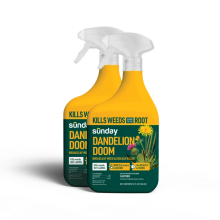
Dandelion Doom Weed Killer Spot Treatment (2-pack)
- Two 32 oz. spray bottles -- great for spot treatments!
- Kills broadleaf weeds down to the root
- See results within hours
Cited sources
Influence of Ferrous Sulfate and Its Elemental Components on Dollar Spot Suppression. McCall, D.S., Et al.


